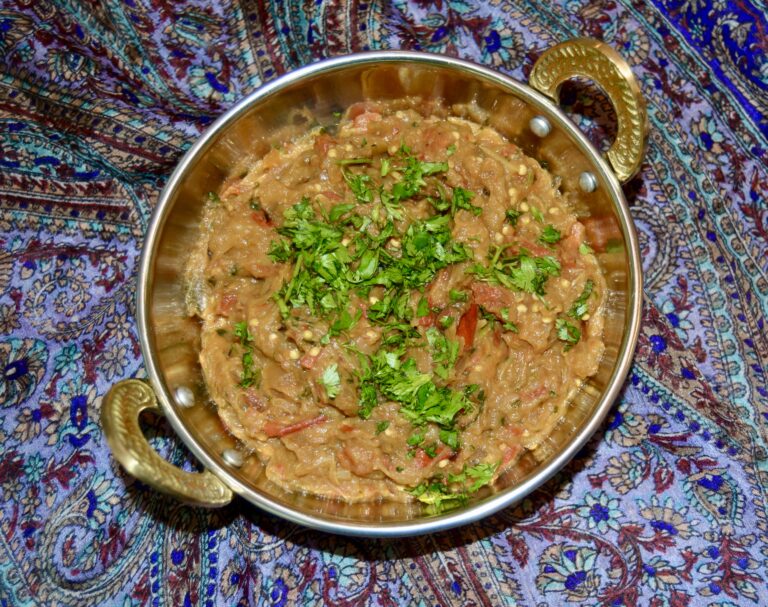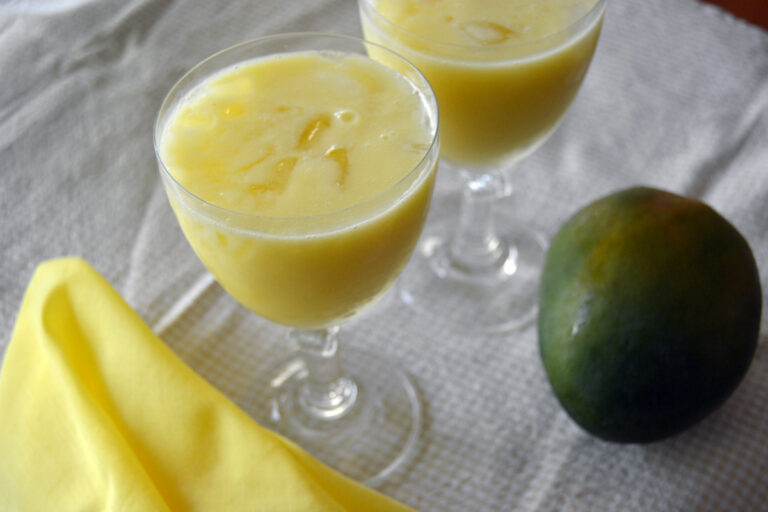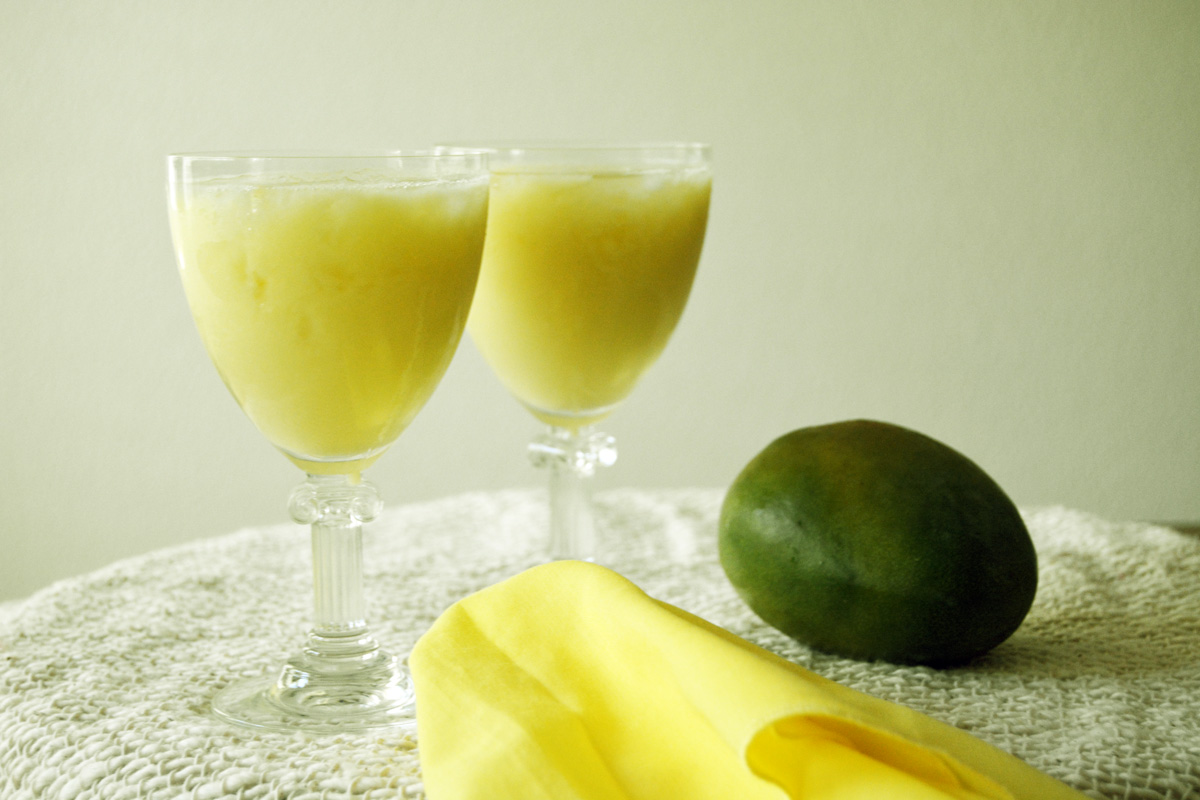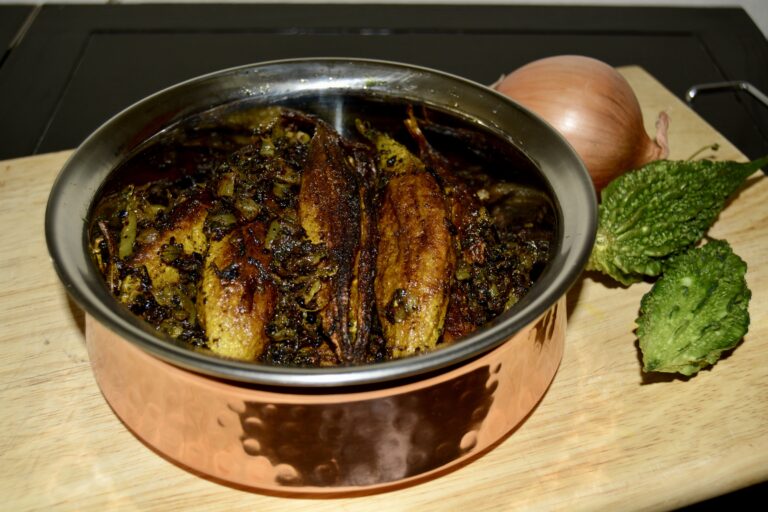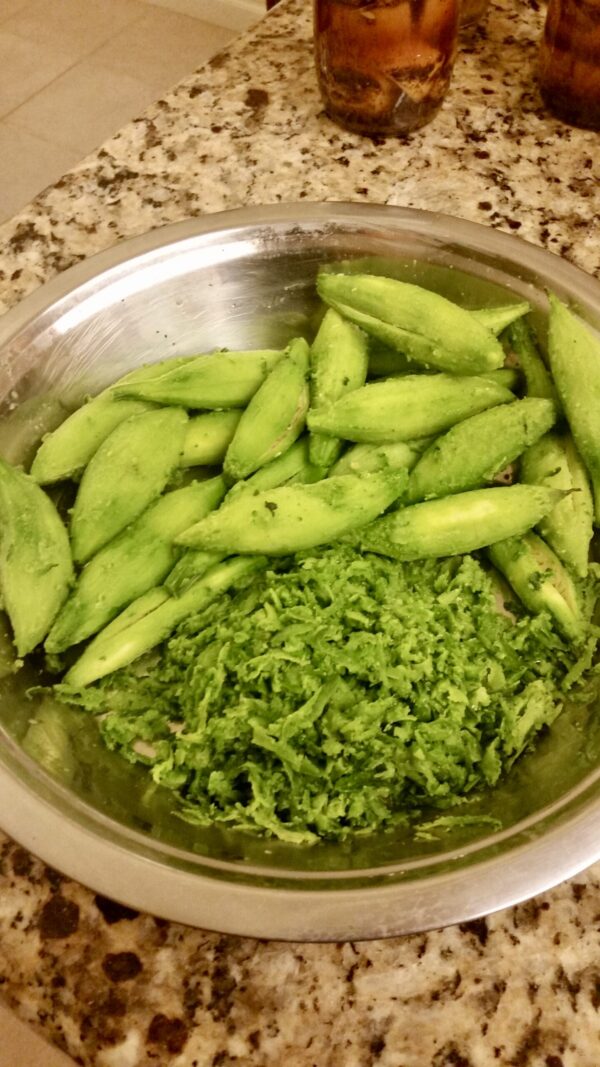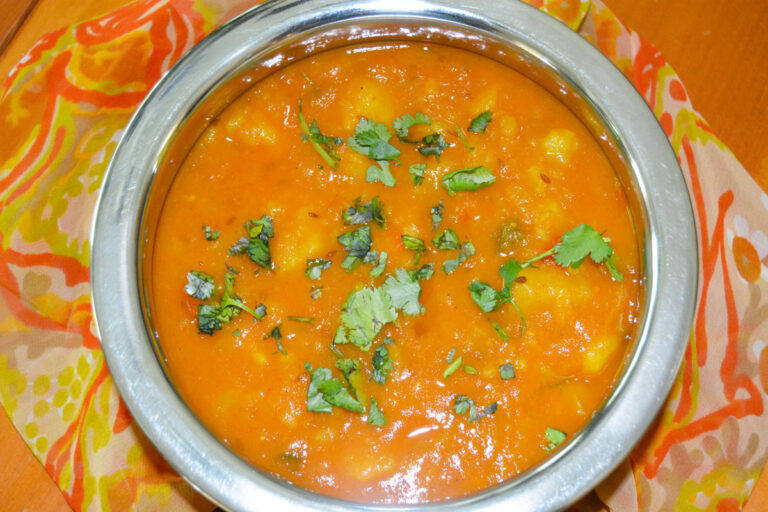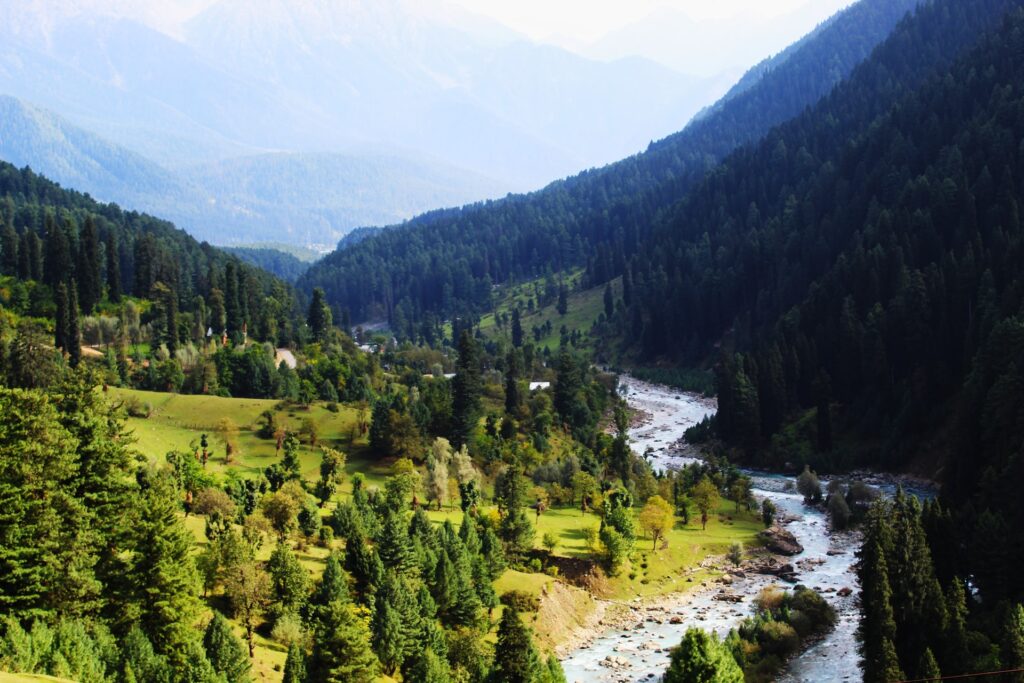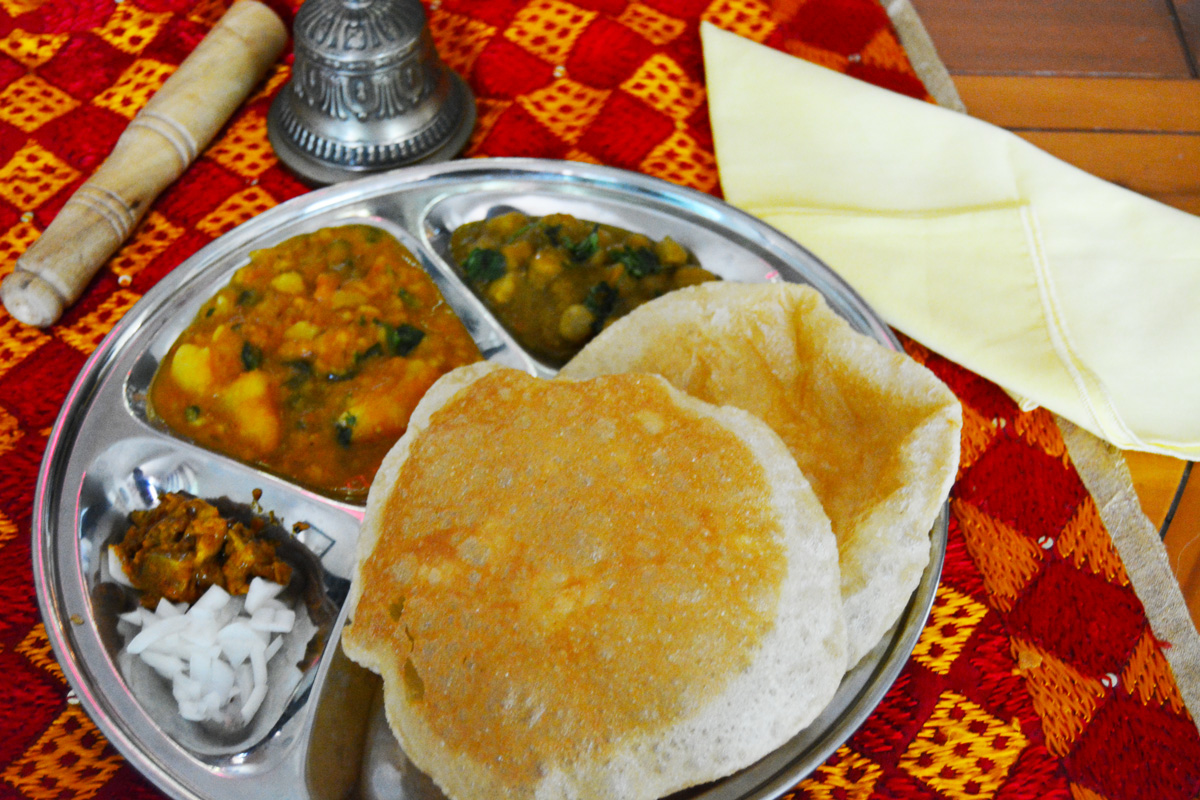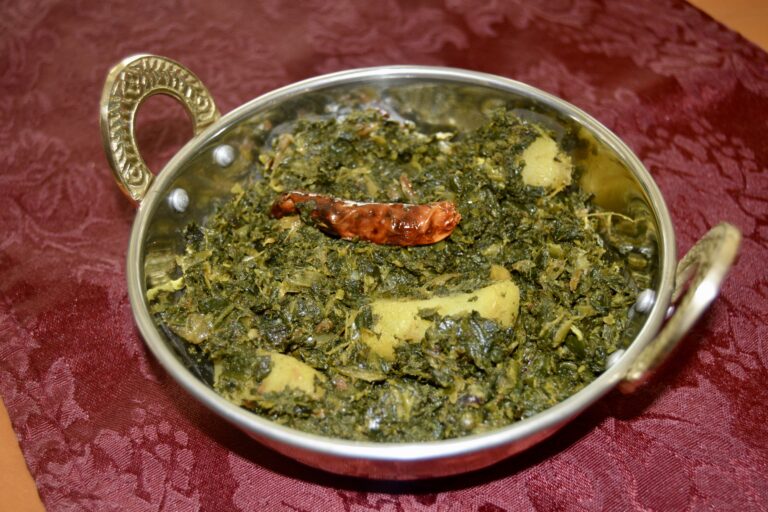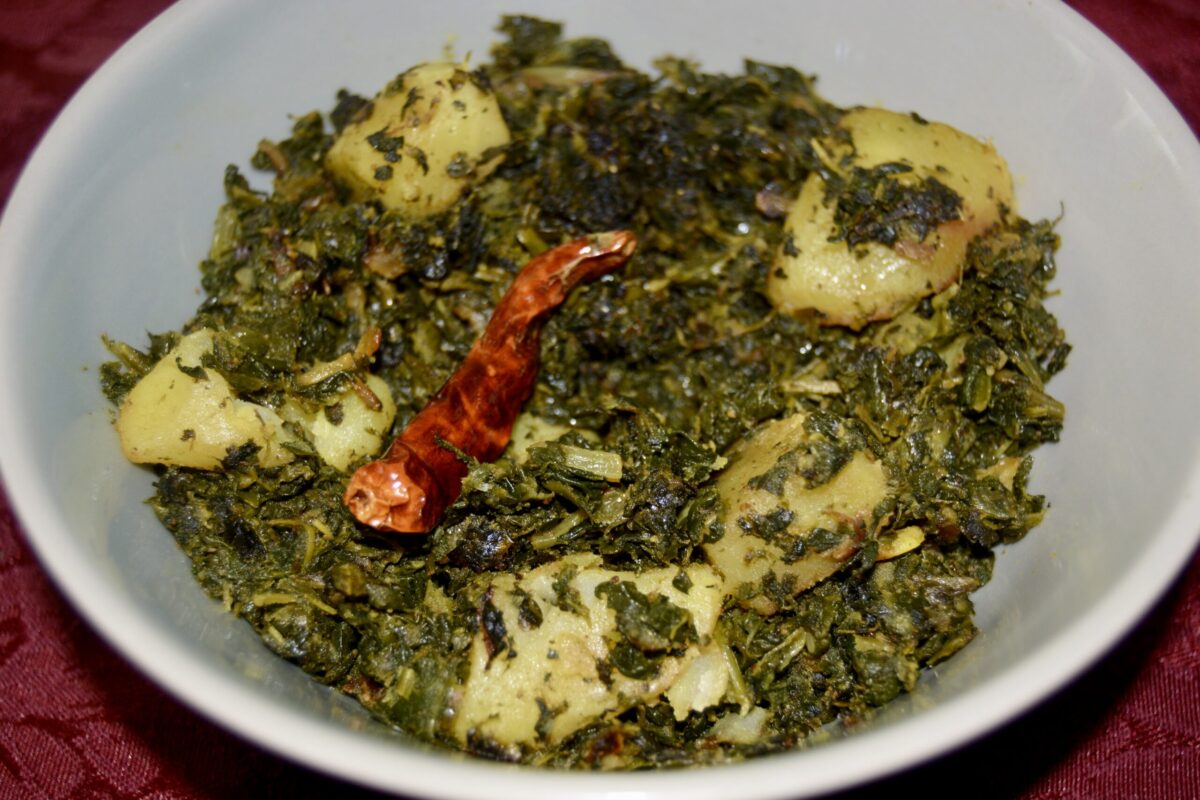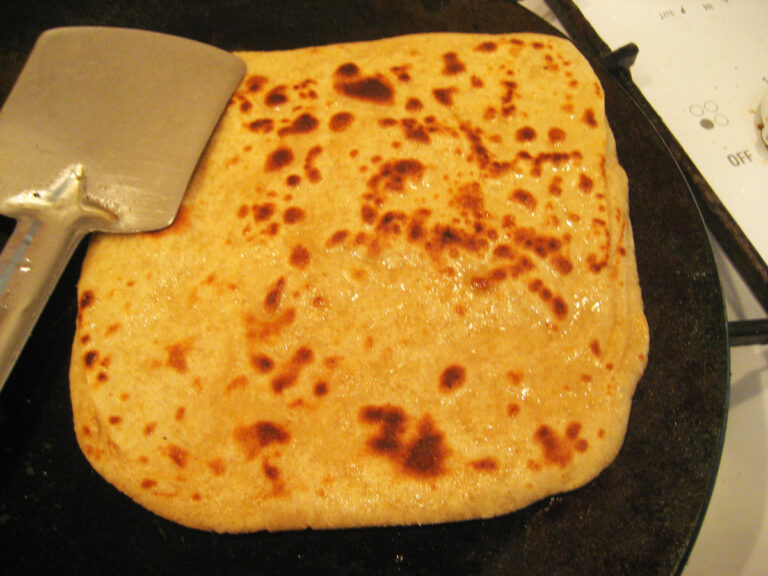My small kitchen garden has been bountiful this year, and the eggplants have been in abundance. I decide I will fix Baingan Bharta. The first time I tried to fix it was as a newlywed. Chachaji (my husband’s Uncle) and his wife (chachiji) were coming over for dinner. Not to digress, but in India, each family relationship is defined with a different term. Chacha refers to your dad’s younger brother, and his wife is called chachi. Ji is added out of respect.
Anyway, I decided to fix the dish from a recipe. The recipe called for large chunks of onions and tomatoes, which changed the flavor and texture of the traditional bharta. Chachaji and Chachiji were gracious enough not to comment on my initial culinary attempt!!
Our son was not much of a bharta fan. He never ate it at home, no matter how much I tried to persuade him to taste it. Then, on a visit to a friend in the neighborhood, he was forced (Indians don’t take no for an answer when it comes to eating!) to stay for dinner. Low and behold, there was the dreaded bharta on the table! He said he did his best to look like he was enjoying it, but concentrated on the dal!! We laugh at the memory. He still dodges it to this day.
Bharta tastes good with rice or roti. It also makes a good filling for a toasted sandwich or as a dip with corn chips.
But you have to like eggplant, of course!

Baingan Bharta (Roasted Mashed Eggplant)
Ingredients
- 2 large eggplants (I prefer the Black Beauty variety—large oval shaped ones)
- 2 large onions (finely chopped)
- 4 medium tomatoes (diced)
- 1 tsp cumin powder
- ½ tsp chili powder (or to your taste)
- ¼ tsp garam masala (optional)
- 1 Serrano chili (finely chopped, optional)
- 2 tbsp fresh cilantro (finely chopped)
- 4 tbsp cooking oil
- ¾ tsp salt
Instructions
To Prepare
- Wash the eggplants and wipe them dry. Char them over a gas burner, broiler, or barbecue. Turn frequently and cook till the outer skin is charred, and the inside is cooked. About 25-30 minutes. The eggplant will collapse and get soft. This method gives it a wonderful earthy, smoky flavor.
To Cook
- On medium heat, heat oil in a wok or deep dish skillet. Add the chopped chili, give it a minute or two for the oil to be infused with the chili heat, add your onions, and sauté for 5-8 minutes until half-brown.
- Add the spice powders (and the garam masala if you use it). Stir a few times.
- Now add the tomatoes. Stir till all the ingredients are nicely blended. Approximately 3-4 minutes.
- Add the eggplant pulp and mix it well into the onion and tomato mixture. Cover and cook for 7-8 minutes, stirring occasionally.
- Uncover and add the fresh cilantro and garam masala. Cook uncovered, stirring a few times, until the oil surfaces on the sides. About 2-3 minutes. I usually add a tablespoon of desi ghee at this point, but you could add butter if you do not have desi ghee handy.
- Turn off and let sit 5 minutes before transferring to a serving dish. Garnish with chopped cilantro.
- Tastes good with roti, rice, in a sandwich, or even a dip with toasted bread triangles, wheat thins, or corn chips.
Notes
The Dhungar Method: Take a small metal bowl and place it in the middle of the bharta in your serving dish. You can put a piece of aluminum foil under the bowl. Heat a small amount of coal until it fumes and flames. Put it into the metal bowl and pour a teaspoon of ghee over it. Cover the dish quickly. Leave it for about 5 minutes, and then remove the lid. Stir the bhurta and garnish with chopped cilantro leaves. I did try to use Liquid smoke once, but I'll leave that story for another time! Maybe it was the Hickory flavor. I probably will have better luck if I use a pure smoke flavor.

